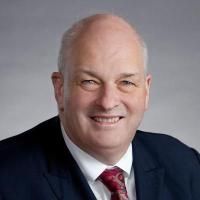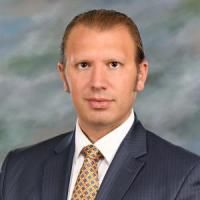Reaching the medicare allowable threshold in adult spinal deformity surgery: multicenter cost analysis comparing actual direct hospital costs versus what the government will pay.
Date
2022-03
Journal Title
Journal ISSN
Volume Title
Repository Usage Stats
views
downloads
Citation Stats
Abstract
Study design
Retrospective multicenter cost analysis.Objective
To (1) determine if index episode of care (iEOC) costs of Adult Spinal Deformity (ASD) surgeries are below the Medicare Allowable (MA) threshold, and (2) identify variables that can predict iEOC cases that are below MA. Previous studies have suggested that actual direct hospital cost of Adult Spinal Deformity (ASD) surgery is higher than Medicare Allowable (MA) rates, which has become the benchmark reimbursement target for hospital accounting systems.Methods
From a prospective, multicenter ASD surgical database, patients undergoing long instrumented fusions (> 5 level) with cost data were identified. iEOC cost was calculated utilizing actual direct hospital cost. MA rates were calculated using hospital specific, year-appropriate CMS Inpatient Pricer Payment System. Recursive partitioning identified potentially modifiable variables that can predict iEOC cost < MA.Results
Administrative direct cost data from 210 patients were obtained from 4 of 11 centers. Ninety-five (45%) patients had iEOC cost < MA. There was significant variation across the four centers in both iEOC cost ($56,788-$78,878, p < 0.0001) and reimbursement ($40,623-$91,351, p < 0.0001) across deformity-specific DRGs (453,454,456,457). Academic centers were more likely to have iEOC costs < MA (67.2% vs 8.9%, p < 0.0001). Recursive partitioning (r2 = 0.309) identified rhBMP-2 use of < 24 mg, sagittal plane deformity, a combined anterior/posterior approach, and an SF36-MCS < 39 as predictive for iEOC cost < MA. Performing an anterior/posterior approach reimburses between 14.7% and 121.1% more (2.2-fold) than posterior-only approach. This change in DRG allows iEOC cost to be more likely below the MA threshold.Conclusion
There is significant institutional (private vs academic) variation in ASD reimbursement. BMP use, deformity type, approach, and baseline mental health impact ASD surgery cost being below Medicare reimbursement. ASD surgeries with anterior/posterior approaches are in DRGs that can potentially reimburse 2.2-fold the posterior-only surgery, making it more likely to fall below the MA threshold.Level of evidence
III.Type
Department
Description
Provenance
Subjects
Citation
Permalink
Published Version (Please cite this version)
Publication Info
Gum, Jeffrey L, Breton Line, Leah Y Carreon, Richard A Hostin, Samrat Yeramaneni, Steven D Glassman, Douglas L Burton, Justin S Smith, et al. (2022). Reaching the medicare allowable threshold in adult spinal deformity surgery: multicenter cost analysis comparing actual direct hospital costs versus what the government will pay. Spine deformity, 10(2). pp. 425–431. 10.1007/s43390-021-00405-4 Retrieved from https://hdl.handle.net/10161/28035.
This is constructed from limited available data and may be imprecise. To cite this article, please review & use the official citation provided by the journal.
Collections
Scholars@Duke

Christopher Ignatius Shaffrey
I have more than 25 years of experience treating patients of all ages with spinal disorders. I have had an interest in the management of spinal disorders since starting my medical education. I performed residencies in both orthopaedic surgery and neurosurgery to gain a comprehensive understanding of the entire range of spinal disorders. My goal has been to find innovative ways to manage the range of spinal conditions, straightforward to complex. I have a focus on managing patients with complex spinal disorders. My patient evaluation and management philosophy is to provide engaged, compassionate care that focuses on providing the simplest and least aggressive treatment option for a particular condition. In many cases, non-operative treatment options exist to improve a patient’s symptoms. I have been actively engaged in clinical research to find the best ways to manage spinal disorders in order to achieve better results with fewer complications.

Peter Passias
Throughout my medical career, I have remained dedicated to improving my patients' quality of life. As a specialist in adult cervical and spinal deformity surgery, I understand the significant impact our interventions have on individuals suffering from debilitating pain and physical and mental health challenges. Spinal deformity surgery merges the complexities of spinal biomechanics with the needs of an aging population. My research focuses on spinal alignment, biomechanics, innovative surgical techniques, and health economics to ensure value-based care that enhances patient outcomes.
Unless otherwise indicated, scholarly articles published by Duke faculty members are made available here with a CC-BY-NC (Creative Commons Attribution Non-Commercial) license, as enabled by the Duke Open Access Policy. If you wish to use the materials in ways not already permitted under CC-BY-NC, please consult the copyright owner. Other materials are made available here through the author’s grant of a non-exclusive license to make their work openly accessible.
